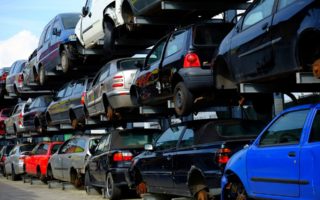With used cars proving a far more popular option for many motorists during these difficult economic times, thousands of second, third and even fourth hand models are sold each year to savvy car buyers. However, some used cars are less than ideal and, when the warranty is far shorter than what you may get it buying new, it can be a risky purchase if you don’t know what you are looking for.
So if you are thinking about buying a used car, what should you check out before ‘doing the deal’?
Check the body & paintwork on flat ground
When you first see the car you should make sure that it is parked on completely flat ground. This will allow you to see whether it is tilting over to one side, perhaps due to sagging or being imbalanced in a certain part due to a fault.
You should then work your way around the car, carefully checking the body for any dents and paintwork for any scratches, scuffs or rust. Certain minor defects can be repaired, though vehicles with rust should be avoided as this will only get worse. If you car dealer is willing to repair the damage for free then great, if not they should be willing to knock down the price somewhat.
Check tyre tread depths
Tyres are the only thing which contacts the car to the road so you need to ensure that they are in a roadworthy condition. If buying a used vehicle then it’s likely that they will have some wear, unless the dealer has replaced them with brand new tyres at their own expense. If they are worn then the wear should be evenly spread, and all the same make and model of tyre should be used to ensure the vehicle is balanced.
You also need to check that the tyres are actually legal to use – the tyre tread depth should be at least 1.6mm deep across ¾ of the tyre width and all around its circumference. You can measure depth quite easily by placing a 20p coin into the tread – it should just be completely covered to be considered legal.
Avoid any corroded engines
A relatively quick check under the car’s bonnet can pretty much tell you all you need to know about the condition of the car. Look carefully at the engine to see whether it is showing any signs of rusting or corrosion. Dark brown stains could indicate oil leaks, which can be very costly if not repaired in quick time.
You should also check things like the brake fluid and engine coolant containers to ensure they are not cracked and leaking – both of which can lead to dangerous car failures if not put right. Finally, find out if the CAM belt has been replaced – this needs to be done at around 60,000-70,000 miles to help the engine keep running smoothly. If this breaks, it can cause a complete and irreparable failure of the car.
But most importantly!
The key thing to remember when buying any car is to ensure you are allowed to test drive it before agreeing to any deal! In most circumstances this will answer any concerns you may have about the vehicle after carrying out your initial checks.




